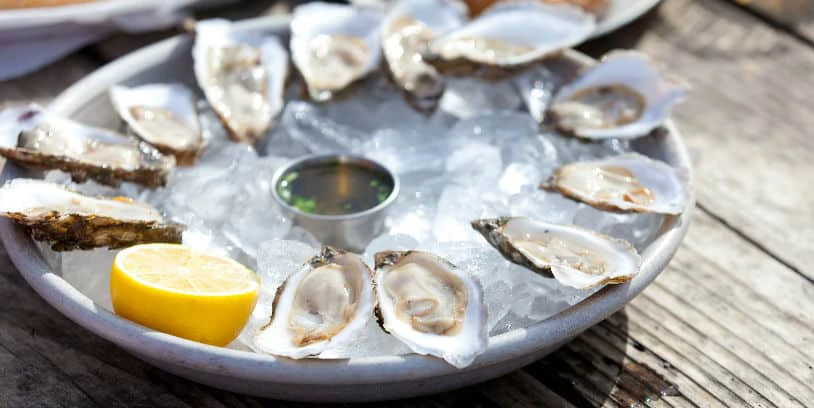Do you love eating oysters? If you do, these oysters nutrition facts will make you love them more!
And if you don’t like oysters, this might be the reason you want to give mollusk a try. Its flavorful meat is considered a delicacy around the world.
Oysters have been around since Roman times. This small gastronomic delicacy is ancestral and has been part of the diet of coastal communities since prehistoric times. They are exquisite, elegant, aphrodisiac, and rich in minerals such as calcium, zinc, copper, and selenium.
If you are a fan of them, and you are as happy to eat them as I am, read this so that your next experience eating oysters is more memorable!
12 Oyster nutrition Facts, tips & tricks
- Buy them fresh, in a market or restaurant you trust. Consuming an oyster that is not in its correct state is very dangerous.
- Don’t judge its price. They grow an inch per year, are 3 to 4 years old when we get to eat them, although, in captivity, they can live up to 20 years.
- At the correct temperature and humidity, they can last up to two weeks out of the sea.
- When buying oysters, they need to be closed and alive. If you buy them to consume at home and find one open, discard it.
- At home, keep them in the fridge, on ice, without washing them, without covering them, with the steeper side down and with a damp cloth over them.
- If you don’t open them yourself at home, let them open them in front of you at the fishmonger or restaurant.
- Almost all the oysters we consume are from the U.S. If you live in states that produce them, support the local product, which will always be fresher.
- Most of the oysters are farmed. But oyster farming, almost always, is practiced at sea.
- You can smell them, a good oyster should smell soft and fresh, not fishy or so strong that we can describe it as “sharp”.
- Oysters from the area tend to be saltier, and those from the Pacific are sweeter. But like wine, they all taste different, depending on where they live.
- They are exquisite, taste them raw, with a few drops of lemon juice. If you eat them roasted, fried or you add cheese, don’t tag me, or invite me, because cooking this delicacy from the sea is called an insult in my kitchen.
- For a simply memorable experience, serve them with a dry white wine: Muscadet, Chablis, Sancerre, or Blanc de Blanc Champagne (all from France) or a Fino, Albariño, or Txakolina from Spain.
If you follow all these recommendations and tips, we can guarantee you will have a memorable combination in the mouth next time you eat oysters. Although in Boquerón, in a fishing town to the west of Puerto Rico, we had them with a cold local beer and we were happy. I leave it to your liking.
Enjoy your meal!
Doreen Colondres is our celebrity chef. Latina, author, tireless traveler, cookery graduate, WSET3 certified, and founder of Vitis House. Follow her on @DoreenColondres networks and visit her at www.LaCocinaNoMuerde.com or www.TheKitchenDoesntBite.com


